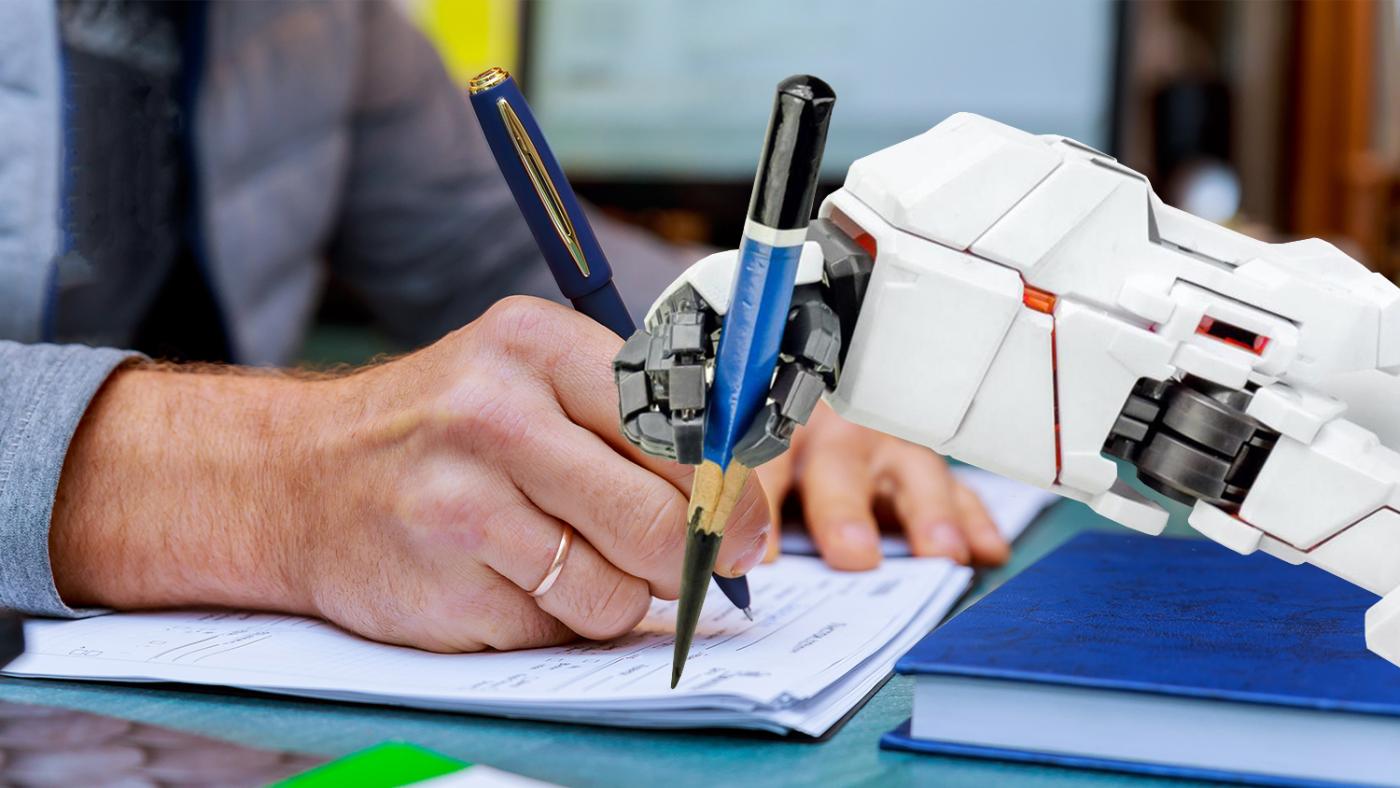Students develop a tool
'Teachers should be allowed to use AI to grade tests'

Grading exams is not exactly the most enjoyable part of being a teacher. It is repetitive and time-consuming work, not to mention the time pressure. After all, lecturers in Utrecht have a ten-day deadline to grade exams. While the teacher is slaving away, students can't wait for their results, as they would prefer to get them as quickly as possible.
There surely is room for improvement here. Handling repetitive work quickly and consistently is what AI does best. In this op-ed, we argue that using AI should be mandatory when grading because the advantages are too significant to be ignored.
We began our journey of automated grading earlier this year while taking a course on science-based entrepreneurship at Utrecht University. We started with problem observation. Soon, stories of overworked teachers began to stand out, and we noticed how much time it takes them to grade exams, especially those with open-ended questions. There had to be a better way. And that's how ToetsTester was born.
ToetsTester reduces lecturers' workloads by partially automatically the process of grading exams. This works for both digital and handwritten tests. Unlike existing systems that are limited to multiple-choice questions, TestTester uses artificial intelligence to analyse complex open answers too. Thanks to this innovative technology, we can recognise and read handwritten answers and then compare them to the model answer. This helps save teachers' time.
Saving time
It seems obvious that automatic grading can save time. Although figures for higher education are lacking, the ones for secondary education are crystal clear. Teachers at that level dedicate no less than 17,000,000 hours to grading yearly. That's right, we're talking about 17 million hours. If you had to do that all by yourself, it would take you almost 2,000 years.
Although it is impossible to completely automate this process, we estimate the time required could be cut in half, which would free up more time for what matters most: providing students with good classes.
But teachers wouldn't be the only ones to benefit. The tool offers advantages for students as well. Not only would the quality of education improve, but they would also get their exam results much faster.

AI Act
When we presented this idea to the university, we were met with a shut door. ‘Grading is high risk,’ they said, referring to the AI Act, the new European legislation that will be implemented over the next few years. In this law, AI systems are categorised into four risk categories: unacceptable, high, limited and minimal. AI is classified as ‘high risk’ in education, which means that strict requirements must be met.
Of course, it would be dangerous and unethical to simply throw tests into ChatGPT and then upload whatever the chatbot spits out on Blackboard. However, when AI plays a supportive role, as described in ‘Recital 53’ of the AI act, the risk is much lower. Keeping the ‘human-in-the-loop’ (that is, having a human monitor the process) is key.
Teachers would have to be critical of the results, just like students are asked to do. They should not blindly accept the model's grades but rather check the answers as well. This way, humans retain ultimate responsibility. When done correctly, automatically-supported grading can make a huge contribution to education. It would be a shame to ignore this opportunity.
Personal insights
The counterargument we hear the most concerns the insights humans can bring to the table, which are considered unique and irreplaceable. Those who deploy this argument believe that grading creates a connection between lecturers and students, allowing the former to better understand what students can and can't do.
In their view, grading with AI would stand in the way of this connection, but we wonder if it is necessary to read through all the answers to gain insight into one's students. Exams that have been checked by AI can also offer valuable insights into students' performance. What's more, AI can generate personalised feedback and clear reports, giving teachers a faster and more targeted view of what students have a good grasp of. This makes learning analytics not only more accessible but also more useful in daily teaching practice.
Start a pilot
In addition, AI could reduce the amount of work to be done. We would like to set up a pilot in which we would examine how much time would be saved and set quality requirements for the model. This would make the process of grading faster, allowing teachers to give students better feedback and turn the two weeks students are forced to wait for exam results a thing of the past.
We hope to do that with TestTester. We are currently testing the tool in secondary schools, but we hope to be able to support higher education in the future as well.
Master's students Kas ten Berge and Bas van Leeuwen set up ToetsTester with the support of Master's student Wout van der Molen. Kas and Wout, the authors of this op-ed, call on anyone interested in the tool to reply or send questions by e-mail: karstenbergeo@gmail.com.
This op-ed was submitted to DUB by its authors. All opinions above are their own and do not necessarily represent those of DUB.
DUB has recently published another op-ed on AI, written by student Pim Molenaar: AI should be more widely embraced in education.